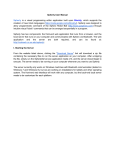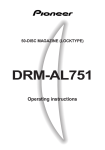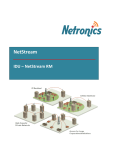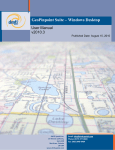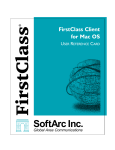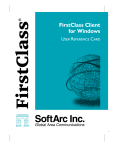Transcript
Get Your Car Ready for Summer Summer's scorching heat, high humidity, heavy rain, dust, and stop-and-go traffic take a toll on your vehicle. You can help reduce the odds of mechanical failure by taking a few simple preventative measures to keep you rollin’ on down the highway – not stranded beside it. As always, know your limits and consult a professional as needed. Air Conditioning Before your air conditioning quits cooling, inspect the system for a worn or damaged belt. Inspect the condenser fins to be sure they are clear of debris so air can move freely around them Have a professional check your refrigerant level Check your owner's manual for info on replacing cabin air filters (if you have them) Cooling System: The greatest cause of summer breakdowns is overheating. Overheating can be serious and may result in permanent engine damage. Check the radiator and hoses for leaks or cracks and be sure all the connections are snug Check the coolant level. If low, add coolant (antifreeze) as necessary. A word of caution – To avoid burns from coolant spray, never remove the radiator or coolant reservoir cap until the engine has cooled completely! Check your vehicle's radiator cap for cracks at the start of the summer driving season: o The rubber gasket can crack, deform, become damaged or simply hardened o Check the cap's metal spring for weakness that may occur over time (most experts advise replacing a radiator cap that is more than five years old) Clean out any debris that might have accumulated in the radiator fins Have the cooling system flushed and refilled (check recommended service interval in your owner’s manual) When driving, monitor the temperature gauge on your dashboard. If you notice it rising beyond “normal” toward the red zone or the engine temperature warning light is on, take immediate action: Turn off A/C, turn on heat to pull hot air from the cooling system and, when safe, pull over to allow engine to cool down. Engine Performance Don’t forget to check the gas cap. The gas cap is a critical component of your vehicle's emission control system, and if it isn't airtight it may trigger "check engine" or "emissions service" lights on your dashboard. Check gasket around gas cap every time you fill up for cracks or damage, and replace the cap if damaged Belts and Hoses: Summer’s heat and humidity will worsen the condition of deteriorating belts and hoses. Hose or belt failure could result in a breakdown. Visually inspect belts and hoses for excessive wear or damage including cracks, fraying, leakage or swelling Check hose clamps and retighten as necessary Tires If you used winter tires, now is the time to change over to your summer tires Have your tires rotated at approximately 5,000 mile intervals or as recommended in your owner’s manual Summer heat will cause the air in your tires expand, so check tire pressure at least monthly while the tires are cold and adjust the pressure. Don't forget to check the spare too! For additional detail on tire safety basics, see our previous edition of Prevention Zone Auto Brakes: Hot weather can increase the temperature of your braking system, causing brake pads to wear more quickly. If the pads wear through, brake rotors may be severely damaged. The parts and labor cost to replace worn pads is much less expensive than brake rotors. Visit Allstate Be Aware and Prepare and the Insurance Institute for Business & Home Safety for more, helpful information. March 2014
